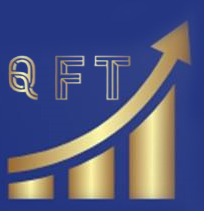- October 31, 2023
- by QFT Finserv
- Blog
“Long-Term Growth or Short-Term Profits? Navigating Investing and Trading”
The world of financial markets offers two distinct approaches: investing and trading. Both have the potential for profit, but they differ significantly in terms of strategy, goals, and time horizons. In this brief overview, we’ll explore the essential distinctions between these two approaches to help you make more informed decisions in your financial journey.
Investing: Building Wealth over Time
Investing is a long-term wealth-building strategy that revolves around buying and holding assets with the expectation of future growth. Key characteristics of investing include:
- Time Horizon: Investors typically have a long-term perspective, often holding assets for years or even decades.
- Goals: The primary objective of investing is to accumulate wealth over time, primarily through the appreciation of assets like stocks, real estate, or bonds.
- Risk Tolerance: Investors often have a higher tolerance for market volatility, as they are focused on long-term growth and can weather short-term fluctuations.
- Research: Fundamental analysis is a common approach, focusing on the financial health and long-term potential of assets.
- Diversification: Investors often diversify their portfolios across different asset classes to reduce risk.
Trading: Capitalizing on Short-Term Opportunities
Trading, on the other hand, is a short-term strategy centered on profiting from price fluctuations within relatively brief timeframes. Key characteristics of trading include:
- Time Horizon: Traders operate on shorter timeframes, ranging from seconds (day trading) to weeks or months (swing trading).
- Goals: The primary objective of trading is to capture short-term price movements and generate quick profits.
- Risk Tolerance: Traders tend to have lower risk tolerance, as they’re exposed to the possibility of rapid losses due to short-term market volatility.
- Research: Technical analysis is often employed to make trading decisions, relying on charts and market indicators to forecast short-term price movements.
- Focus on Specific Assets: Traders may concentrate on specific assets or market segments to exploit short-term opportunities.
Choosing the Right Approach
The choice between investing and trading ultimately depends on your financial goals, risk tolerance, and time commitment. It’s important to note that both approaches can be profitable when executed with discipline and a well-thought-out strategy.
In conclusion, whether you’re an investor or a trader, understanding the differences between these approaches is crucial for developing a strategy that aligns with your financial objectives and risk tolerance. Ultimately, the choice between investing and trading or both should be a deliberate decision guided by your individual financial circumstances and goals.





